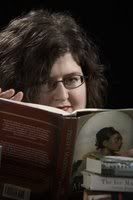 “Kristallnacht was the prelude to the destruction of a whole people, and an indication of what happens when a society falls victim to its baser instincts.” Sir Martin Gilbert
“Kristallnacht was the prelude to the destruction of a whole people, and an indication of what happens when a society falls victim to its baser instincts.” Sir Martin GilbertOn November 9, 1938, the flames of carefully fanned hatred erupted into a night of unprecedented violence against the Jewish citizens of German-controlled territories. Perpetuated by both Nazi stormtroopers and German citizens, Kristallnacht (Night of Broken Glass) as the following 24 hours came to be known, saw the burning of nearly all of Germany’s synagogues, destruction of tens of thousands of Jewish homes and business, and the deportation of more than 30,000 Jewish men to concentration camps.
This night was witnessed by journalists faithfully reporting the horrors to readers throughout the rest of the world - inciting international outrage. In Martin Gilbert’s opinion, Kristallnacht was a turning point in world history. The systematic eradication of Jews, who traced their origins in Germany to Roman times, began with Kristallnacht and, along with Hitler’s invasion of Czechoslovakia in 1939, hastened the onset of World War II and the Holocaust.
Gilbert presents an unflinching account of the depth of brutality perpetuated in an orgy of violence on November 9/10, 1938 and the tales of the heroic citizens who risked everything to save Jewish lives. Kristallnacht: Prelude to Destruction presents a look at this pivotal event in a way unlike any, by presenting more than 50 eye-witness accounts of German survivors who were terrorized simply for the crime of being Jewish.
Gilbert writes in a conversational tone, creating a setting to pull readers in closer to events. His use of contemporary news articles and first person accounts puts a human face on the tragedy, moving it from “history” to a personal account, one of terrifying immediacy.
Esther Ascher, a fourteen-year-old girl “who did not look Jewish” and therefore should be safe leaving her house, relates the story of being sent to find out what had happened to her uncle’s store. “The streets were deserted except for SS men, marching with a Jewish male between them. It became clear to me that these unfortunate people were on their way to a concentration camp.” It is only when she sees for herself the destruction of her uncle’s store that the truth begins to sink in. “The harsh reality of what had happened, and what still might happen, began to sink in…From that point on life changed for me. I had but one goal, to leave Germany…”
The strength of Kristallnacht lies not only in the first hand accounts gathered by Gilbert, but in his in-depth research and understanding of his subject. The second part of the history focuses on the origins of Kristallnacht in the five years of discrimination beginning with Hitler’s rise to power in 1933.
When reading any book, it is important to know the author’s intent, what message he wishes to share. In Kristallnacht, Gilbert is contributing to the ‘Making History’ Series, the purpose of which is to “take a moment at which an event or events made a lasting impact on the unfolding course of history…Each volume of ‘Making History’ will stimulate the reader to think about Europe’s and America’s relationship to their past, and the key figures and incidents which moulded and formed its process.”
Gilbert’s selection as a contributor to this series is natural. A leading Holocaust historian and the author of seventy-seven books, Gilbert is Sir Winston Churchill’s official biographer. His book The Holocaust: A History of the Jews of Europe During the Second World War is a classic work on the subject.
Series: Making History
ISBN10: 0060570830
Publisher: HarperCollins Limited
Publication Date: June 2006
Author Website: Martin Gilbert
tags: books book reviews History Martin Gilbert Kristallnacht Holocaust World War II Nazi Germany


1 comment:
Another one to add to my wishlist. I don't know if I should thank you or not. Love reding your reviews, but my wishlist grows by leaps and bounds when I do!
Post a Comment